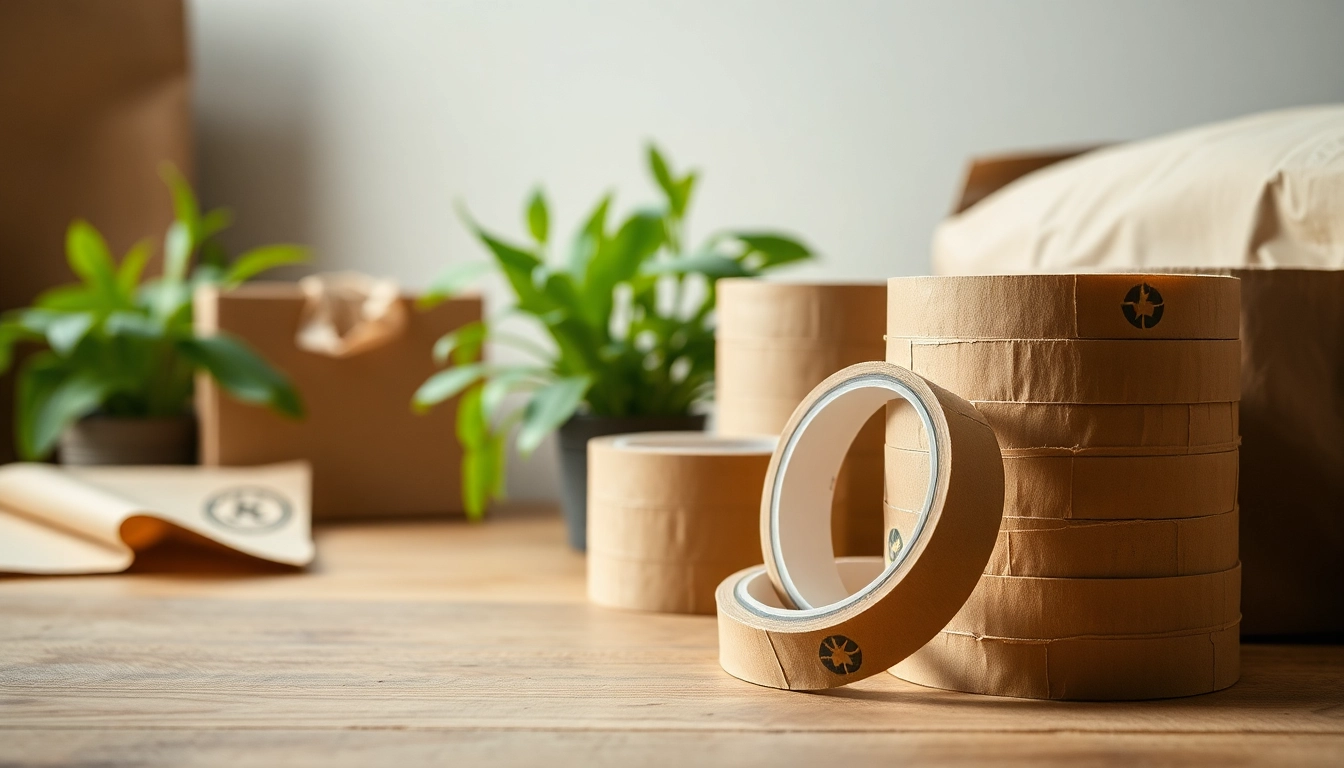Understanding Recyclable Tape
As sustainability becomes increasingly vital in our daily lives, the packaging industry is undergoing significant changes. Among these transformations, recyclable tape has emerged as a practical solution for eco-conscious consumers and businesses alike. This tape not only contributes to reducing environmental waste but also effectively meets various packaging and sealing needs.
What is Recyclable Tape?
Recyclable tape is predominantly made from paper or other biodegradable materials that can be processed and repurposed after use. Unlike traditional plastic tapes, which can contaminate recycling streams and contribute to landfill buildup, recyclable tape offers a greener alternative that aligns with eco-friendly practices. With advancements in adhesive technology, many types of recyclable tape can now provide the same level of adhesion and durability as their plastic counterparts.
The Materials Behind Recyclable Tape
The principal materials used in recyclable tape include:
- Kraft Paper: This is a strong, fibrous paper known for its durability. Kraft paper is often used as a basis for many types of recyclable tape, providing robust adhesion while maintaining recyclability.
- Natural Adhesives: Unlike synthetic adhesives that can be harmful to the recycling process, many recyclable tapes use natural rubber or starch-based adhesives that can break down in recycling systems.
- PLA (Polylactic Acid): Some brands utilize PLA derived from cornstarch or sugarcane, offering an additional bio-based component that enhances the tape’s sustainability profile without sacrificing quality.
Benefits of Using Recyclable Tape
Adopting recyclable tape has various advantages, including:
- Environmental Benefits: Reduces plastic waste and encourages responsible disposal practices, supporting a circular economy.
- Compatibility with Recycling Systems: Since recyclable tape is made from materials accepted by most recycling programs, it helps keep recycling processes streamlined.
- Cost-Effectiveness: While some recyclable tapes may have a slightly higher upfront cost, their sustainable nature can lead to long-term savings through reduced waste disposal fees and enhanced brand reputation.
- Versatile Applications: Recyclable tape can be used in many contexts, including packaging, labeling, arts and crafts, and more, making it a practical choice for various sectors.
Different Types of Recyclable Tape
Kraft Paper Tape
Kraft paper tape is one of the most popular types of recyclable tape. It is available in various widths and strengths, making it suitable for numerous applications. This tape is often used in packaging, shipping, and sealing boxes due to its excellent adhesion and ability to conform to different surfaces. Moreover, it remains easily writable, allowing for labels and markings directly on the tape.
Water-Activated Tape
Water-activated tape, often referred to as gummed tape, is another sustainable option. This tape is made from paper and requires water to activate the adhesive. Once moistened, it bonds securely to cardboard, operating effectively for shipping and packaging. Water-activated tape is particularly favored for its additional security features, as it provides a tamper-evident seal, ensuring package integrity.
Compostable Options and Their Uses
As environmental awareness grows, compostable tapes are gaining traction. These tapes are designed not only to be recyclable but also to break down naturally in composting environments. Typically made from natural fibers and biodegradable adhesives, these tapes can be used for shipping biodegradable products or for packaging that will eventually be composted. However, proper disposal methods must be followed to ensure they achieve their intended composting effects.
Applications of Recyclable Tape in Daily Life
Home and Office Uses
In both home and office settings, recyclable tape plays a vital role. Users can employ it to:
- Seal boxes for moving or storage.
- Label packages meticulously while maintaining eco-friendly practices.
- Conduct various arts and crafts projects, leveraging its adhesive qualities.
Shipping and Packaging Solutions
Businesses are increasingly choosing recyclable tape for their packaging needs. When used for shipping, it enhances their brand image as environmentally responsible, especially among eco-conscious consumers. Moreover, this tape often complements recyclable cardboard boxes, streamlining the entire packaging process.
Arts and Crafts Projects
Recyclable tape serves as an innovative and sustainable resource for arts and crafts. Children and adults alike can use it for scrapbooking, DIY projects, and other creative endeavors. The availability of various colors and patterns elevates its usability while promoting sustainable art practices.
Choosing the Right Recyclable Tape
Factors to Consider When Selecting Tape
When deciding on the appropriate recyclable tape, consider the following factors:
- Adhesion Strength: Depending on the application, you may require a tape with varying levels of adhesive strength.
- Thickness and Durability: For heavy or bulky packages, a thicker tape with higher durability is advisable.
- Width: The selected width should align with the task, whether for sealing boxes or for arts and crafts projects.
Comparing Price Points and Quality
It’s important to balance quality and cost when selecting recyclable tape. While some options may be more expensive, they often provide additional benefits, such as greater durability or better adhesive qualities, that can justify the price. Additionally, investing in high-quality tape can reduce potential packaging failures, leading to cost savings in the long run.
Eco-Certifications to Look For
When evaluating recyclable tape, assure you look for eco-certifications that indicate genuine sustainability. Certifications may include:
- FSC Certified: This indicates that the tape is sourced from responsibly managed forests.
- Compostable Certifications: Ensuring the tape will break down in designated composting systems.
- Recyclable Labels: Clear labeling indicating recyclability can guide users on proper disposal methods.
Best Practices for Using Recyclable Tape
Proper Application Techniques
To ensure the effectiveness of recyclable tape, consider best practices for application:
- Start with clean surfaces to ensure optimal adhesion.
- Apply steady pressure while sealing to enhance the bond.
- For water-activated tape, ensure it is adequately moistened before application.
How to Dispose of Tape Responsibly
Post-use, dispose of recyclable tape according to local guidelines. Most recyclable tapes can be tossed into the recycling bin, but always double-check your local recycling rules to ensure proper handling. Avoid mixing different materials, such as plastic and paper, to ensure the integrity of the recycling process.
Encouraging Recycling in Your Community
Participation in community recycling initiatives can amplify the impact of using recyclable tape. Engage with local organizations to promote awareness around sustainable packaging solutions. Set up workshops or informational tables to educate others on the benefits and proper disposal methods for recyclable tape.



